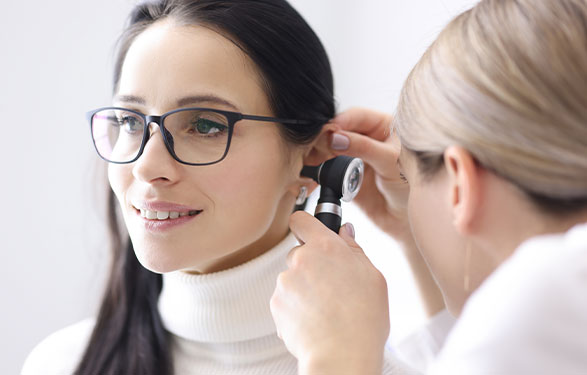
Conductive and Sensorineural Hearing Loss
April 17, 2025Mixed hearing loss is a combination of both sensorineural as well as conductive hearing loss. It occurs when both the middle and inner ear are damaged and can result in hearing loss that varies from minor to intense severity.
Understanding Mixed Hearing Loss: A Comprehensive Guide
Hearing is one of our most vital senses, connecting us to the world through conversation, music, and the sounds of nature. But when hearing is compromised, it can significantly impact a person's quality of life. One condition that affects many people is Mixed Hearing Loss, a combination of both conductive and sensorineural hearing loss. Let’s dive deeper into what it is, its causes, symptoms, and possible treatment options.
What Is Mixed Hearing Loss?
Mixed hearing loss occurs when both the outer/middle ear and the inner ear are affected. This means a person experiences issues with sound conduction through the ear canal and eardrum (conductive loss) as well as damage to the inner ear or auditory nerve (sensorineural loss). The result is a more complex hearing impairment that requires tailored treatment.
Common Causes of Mixed Hearing Loss
Since mixed hearing loss is essentially two types of hearing loss combined, it can stem from multiple causes, including:
- Prolonged Exposure to Loud Noise: Damaging the inner ear’s delicate structures over time.
- Ear Infections: Chronic infections can create blockages in the outer or middle ear while also leading to nerve damage.
- Head Trauma: Injuries that affect multiple parts of the ear structure.
- Otosclerosis: Abnormal bone growth in the middle ear, potentially paired with nerve damage.
- Aging: Natural degeneration of the inner ear’s sensory cells combined with other external ear conditions.
- Impacted Earwax or Foreign Objects: Creating a physical obstruction while inner ear damage persists.
Recognizing the Symptoms
The symptoms of mixed hearing loss can vary depending on its severity. Some common signs include:
- Difficulty understanding speech, especially in noisy environments
- Frequently asking people to repeat themselves
- Muffled sounds or distorted hearing
- Trouble hearing lower or higher-pitched tones
- Ear pain or infections (if conductive loss is involved)
- Dizziness or balance issues (if inner ear structures are affected)
Diagnosis and Treatment Options
A hearing specialist (audiologist or ENT doctor) will typically conduct a series of tests, including audiometry and physical ear examinations, to pinpoint the type and severity of the hearing loss.
Treatment approaches
- Hearing Aids: Can amplify sounds while improving both conductive and sensorineural hearing loss.
- Medical Intervention: If the conductive portion is caused by an obstruction (earwax, infection, or bone growth), treatment may include medication or surgery.
- Cochlear Implants: For severe cases affecting the inner ear’s function.
- Bone-Anchored Hearing Systems: Useful for conductive hearing issues where traditional hearing aids don’t help.
- Assistive Listening Devices: Such as FM systems and captioning tools for better communication.
Living with Mixed Hearing Loss
Adapting to hearing loss may require lifestyle adjustments, but support systems and modern technology can significantly improve communication and daily interactions. Seeking early diagnosis and appropriate treatment can make a world of difference in maintaining a fulfilling and connected life.
If you or someone you know is experiencing symptoms of mixed hearing loss, consulting a specialist is the best first step toward better hearing health.
Have you encountered challenges with hearing loss or know someone who has? Feel free to share your experiences here!
